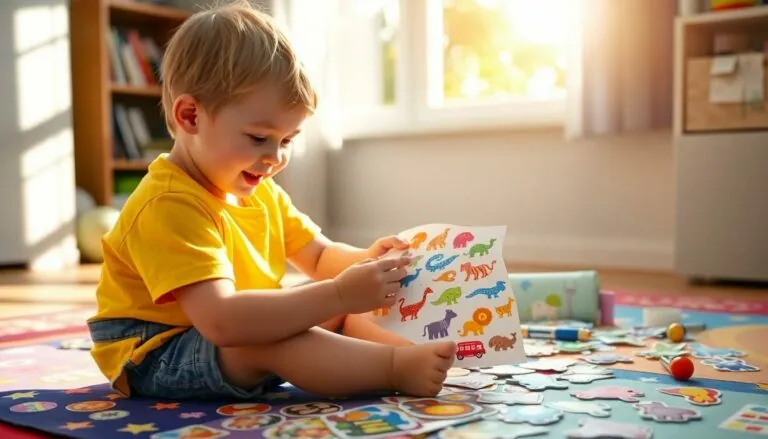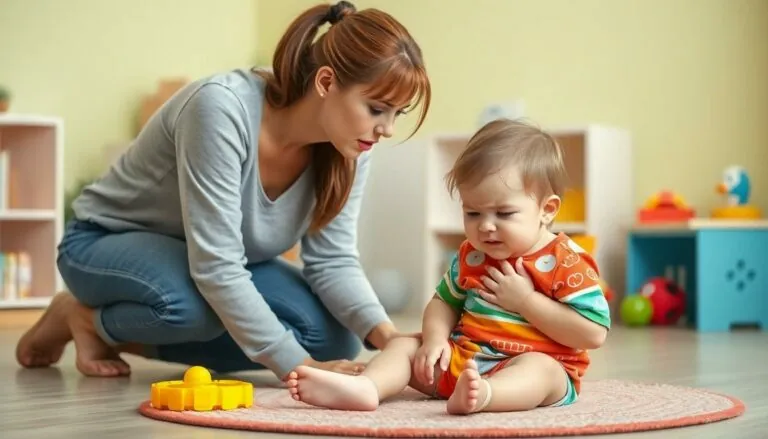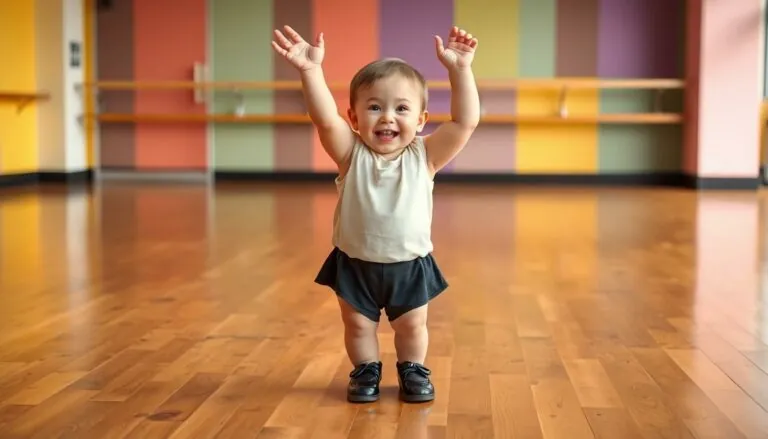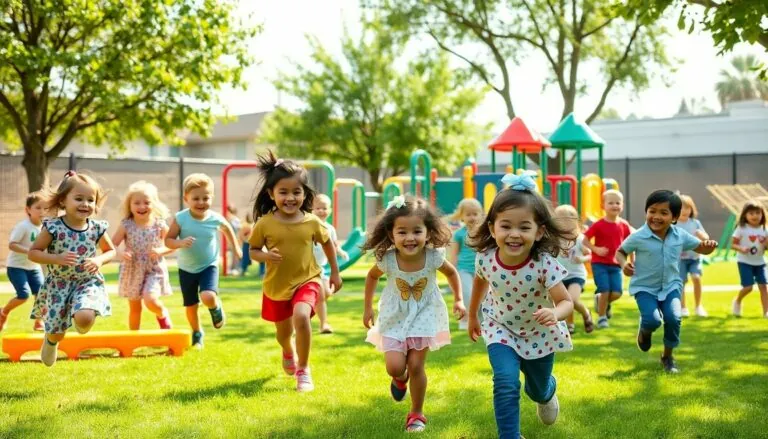Table of Contents
ToggleIn a world filled with toys that beep, buzz, and light up, the Montessori mirror stands out as a simple yet powerful tool for child development. Forget the flashy gadgets; this unassuming piece of glass can spark curiosity and self-discovery in little ones. Imagine a toddler gazing into a mirror, eyes wide with wonder, as they explore their reflection and learn about themselves. It’s like having a mini therapist right in the playroom, minus the hourly rate!
Montessori mirrors aren’t just for vanity; they’re gateways to imaginative play and cognitive growth. These mirrors encourage children to engage with their surroundings, develop motor skills, and boost their confidence—all while having a blast. So, if you’re ready to transform your child’s playtime into a journey of self-exploration, it’s time to embrace the magic of the Montessori mirror. Who knew a little glass could hold such big potential?
Overview of Montessori Mirrors
Montessori mirrors play a crucial role in child development. These mirrors, designed specifically for young children, promote exploration and independent learning. Reflecting their own images, children gain a sense of self-awareness. Simple designs enhance both curiosity and learning, unlike complex toys that may distract from individual discovery.
The mirrors invite imaginative play, allowing children to engage creatively with their reflections. They can make faces, mimic movements, and explore expressions, which aids in emotional recognition. Beyond play, these mirrors support the development of fine and gross motor skills. For example, reaching for their reflections helps improve hand-eye coordination.
Montessori mirrors also foster confidence. As toddlers learn to recognize and understand their physical presence, they become more secure in their identities. When integrated into daily activities, these mirrors can reinforce positive self-image. Parents and educators benefit from including them in environments where self-discovery is a goal.
Incorporating Montessori mirrors into playtime creates a rich experience. Children interact naturally with these tools, encouraging learning through observation and experimentation. Educational settings can utilize these mirrors to enhance sensory experiences and promote independence. Overall, Montessori mirrors serve as valuable instruments in the journey of growth and self-exploration for young children.
Benefits of Montessori Mirrors
Montessori mirrors offer various benefits for child development, enhancing both learning and self-awareness. Their simple design encourages curiosity and active engagement during playtime.
Enhancing Self-Discovery
Montessori mirrors enhance self-discovery by providing children opportunities to explore their reflections. Through these mirrors, toddlers engage with their image, fostering a sense of identity. They observe facial expressions and movements, which promotes emotional recognition. Observing themselves leads to essential discoveries about their own physical presence. As they mimic actions and expressions, children build confidence in their self-image. Self-discovery experiences contribute to deepening their understanding of emotions and individuality. Highly reflective surfaces also invite spontaneous play, allowing creative exploration.
Promoting Independence
Montessori mirrors promote independence in various ways. First, they encourage toddlers to investigate their surroundings without adult assistance. Children can move around and interact with their reflection freely, fostering a sense of autonomy. Second, engaging with their image forms a basis for self-regulation, encouraging self-control during interactions. Furthermore, mirrors provide a platform for imaginative play that allows children to set and follow their own narratives. Independence nurtures decision-making skills as children choose how to engage with their reflections. Overall, Montessori mirrors create environments that favor independent exploration and learning, essential for a child’s growth.
Types of Montessori Mirrors
Montessori mirrors come in various designs, each serving unique purposes for child development. These types enhance learning experiences by promoting exploration and self-discovery.
Portable Mirrors
Portable mirrors are lightweight and easy to move, perfect for toddlers who enjoy exploring different environments. They encourage children to engage with their reflections wherever they go. These mirrors often feature safe edges, making them suitable for little hands. Kids can practice facial expressions, movements, and even imaginative play during outdoor activities. The versatility of portable mirrors offers different settings for independent exploration, fostering self-awareness. They encourage children to investigate their surroundings in varied locations, which enhances their confidence.
Wall-Mounted Mirrors
Wall-mounted mirrors create a stable focal point for play and learning, easily securing them in playrooms or educational spaces. Their fixed position invites children to interact with their reflections frequently. As toddlers observe themselves, they develop motor skills by reaching out and experimenting with movements. Wall-mounted mirrors typically provide a larger viewing area, ideal for social play with peers. They can stimulate conversations around emotions and mimicry, enhancing emotional recognition and communication skills. This setup fosters a sense of ownership in their space, allowing children to explore their identity in a safe environment.
Incorporating Montessori Mirrors in the Home
Incorporating Montessori mirrors into everyday settings enhances child development significantly. These mirrors can transform play areas, fostering creativity and independence.
Creative Play Spaces
Creating engaging play spaces involves strategically placing Montessori mirrors. Mirrors can be positioned in different areas to encourage exploration. Children can interact with their reflections, leading to imaginative play and emotional expression. A play mat paired with a mirror offers a safe zone for movement, prompting toddlers to crawl and explore. Different reflections stimulate creativity, inspiring role play and storytelling. Various subjects, such as animals or people, encourage children to mimic and act, enhancing social skills. Designing a playful environment around these mirrors ensures they remain a central focus during playtime.
Learning Environments
In learning environments, Montessori mirrors play a pivotal role. Visual experiences support children’s self-awareness and understanding of emotions. Wall-mounted mirrors in classrooms provide opportunities for group activities. Teachers can use mirrors to prompt discussions about facial expressions and body language, enhancing communication skills. Incorporating mirrors into early learning settings encourages observation and reflection, which fosters cognitive development. Through guided activities, children learn to recognize their actions and feelings. This ongoing reflection process boosts confidence, allowing them to engage independently in learning activities. Montessori mirrors also serve as effective tools for self-regulation, guiding children in managing their emotions.
Safety Considerations
Safety remains a top priority when integrating Montessori mirrors into children’s environments. Selecting mirrors made of shatterproof glass or acrylic reduces the risk of injury. Ensuring that any wall-mounted mirrors are securely installed prevents accidents during play.
Positioning mirrors at appropriate heights allows toddlers to explore comfortably without climbing or straining. Keeping edges rounded or cushioned minimizes sharpness, enhancing safety during interactive use. Regularly inspecting mirrors for signs of wear or damage helps maintain a secure play area.
Making sure mirrors are stable during use is essential. Portable mirrors should feature non-slip bases or be weighted to prevent tipping. In group settings, supervising interactions encourages safe and collaborative play.
Avoiding locations with high foot traffic or potential hazards makes a significant difference. Mirrors in calm, designated play zones enhance focus and safety during exploration. Following these guidelines promotes a positive and secure environment for self-discovery.
Educators and parents benefit from discussing safety rules with children. Simple instructions, such as not touching mirrors with wet hands or jumping near them, encourage mindfulness. Instilling an understanding of safety fosters responsible engagement with Montessori mirrors.
Regular safety audits can bolster peace of mind. Checking for loose screws, sharp edges, or instability should occur frequently. Keeping the environment safe enhances the learning experience while allowing for fun interaction with reflections.
Conclusion
Montessori mirrors play a pivotal role in nurturing a child’s development. Their simplicity invites exploration and fosters self-awareness in toddlers. By engaging with their reflections, children not only enhance their motor skills but also build confidence and emotional recognition.
Incorporating these mirrors into play and learning environments can create enriching experiences that promote independence and creativity. Safety remains a priority, ensuring that these tools are both effective and secure. With thoughtful integration, Montessori mirrors can significantly contribute to a child’s journey of self-discovery and growth.






